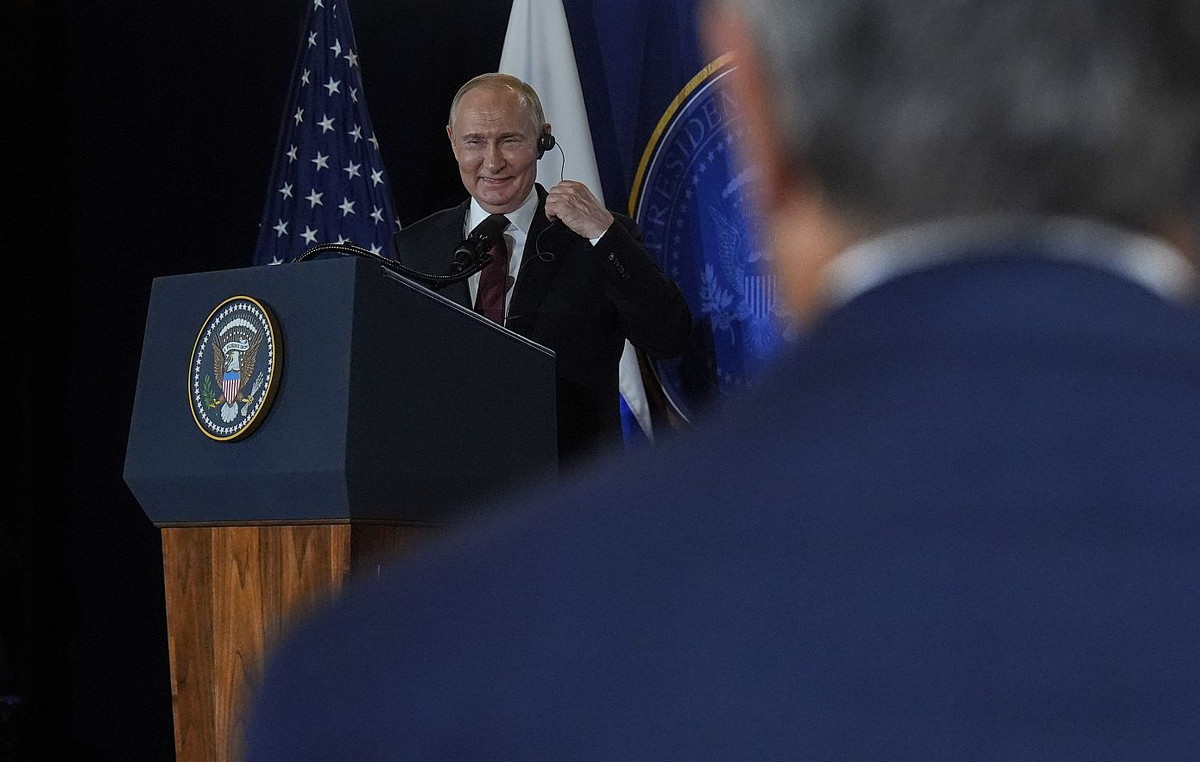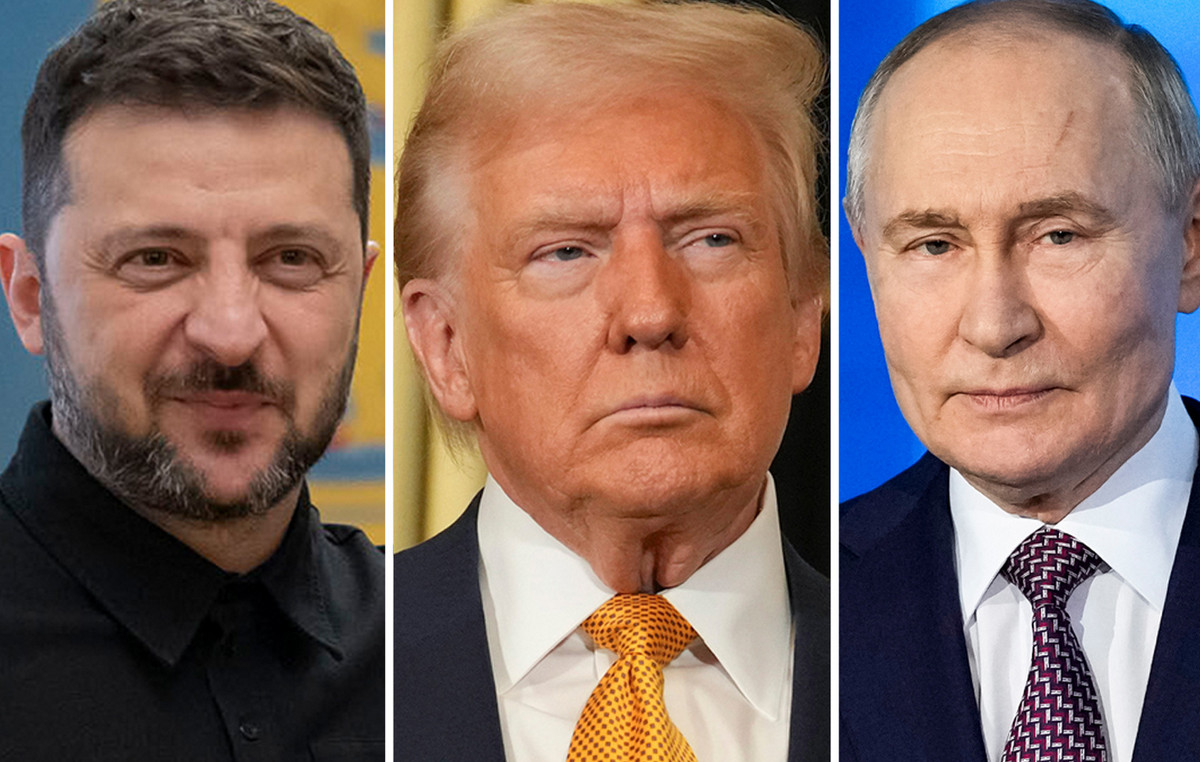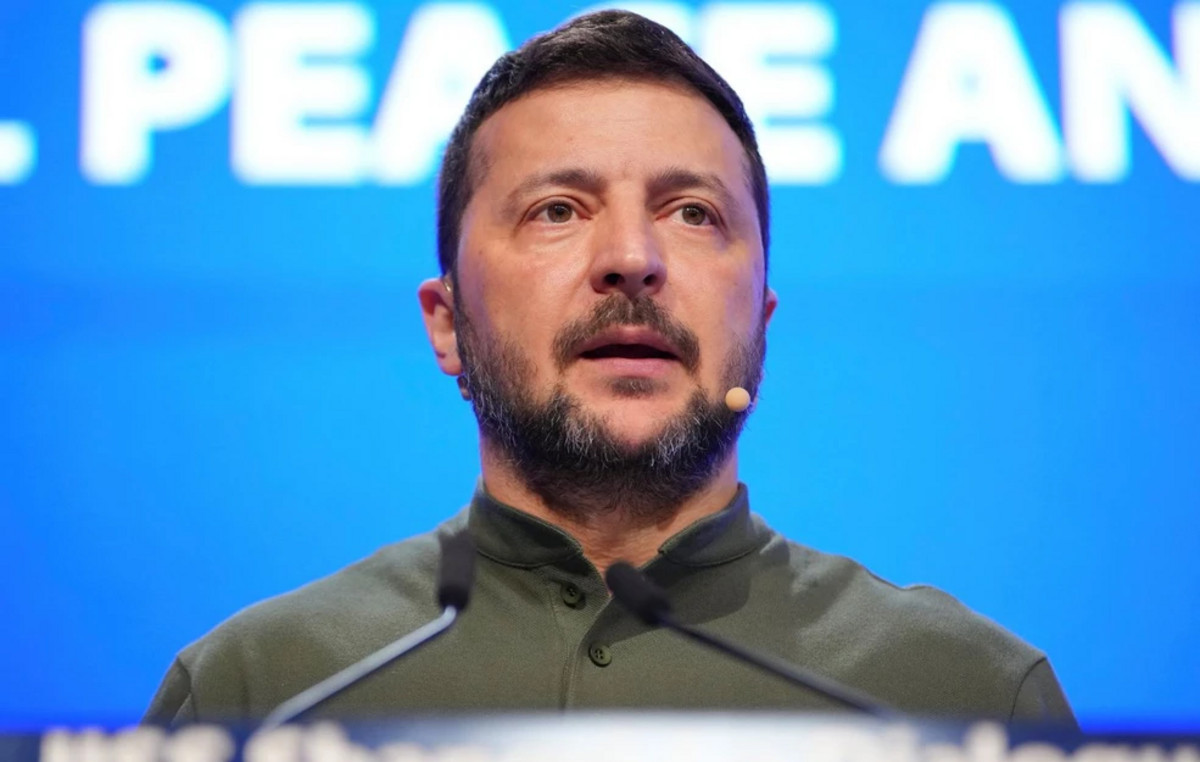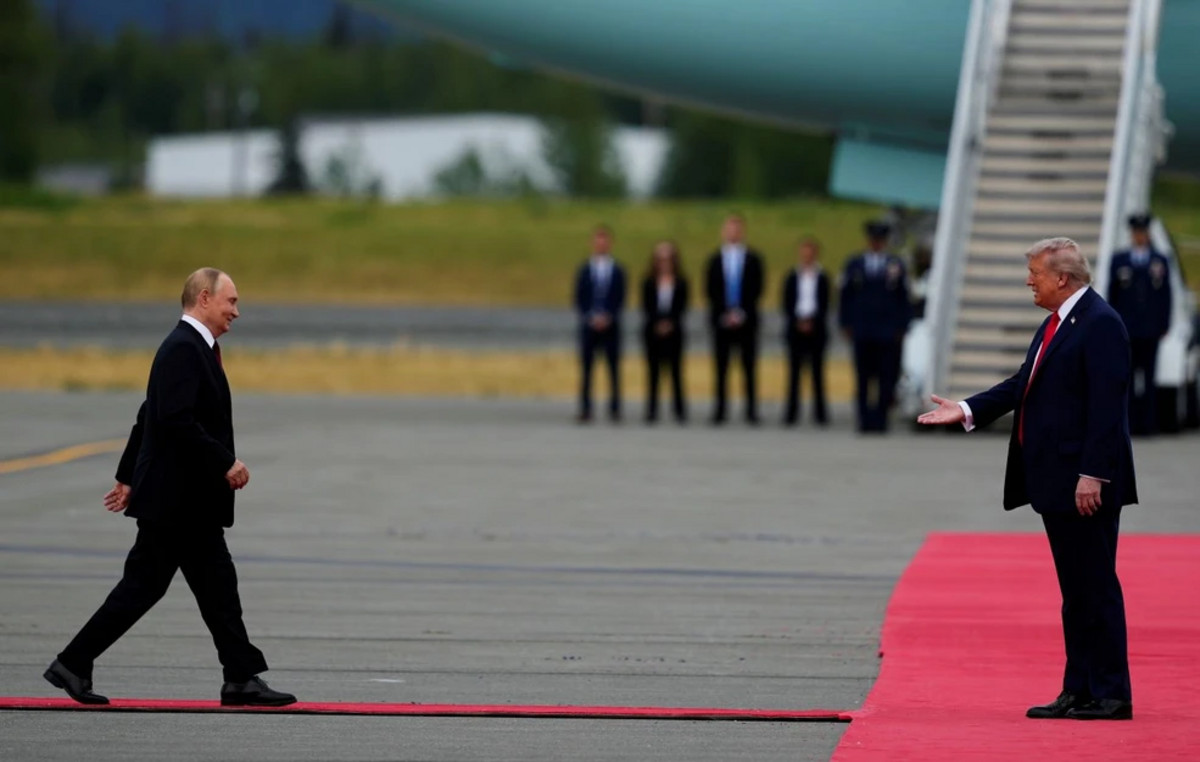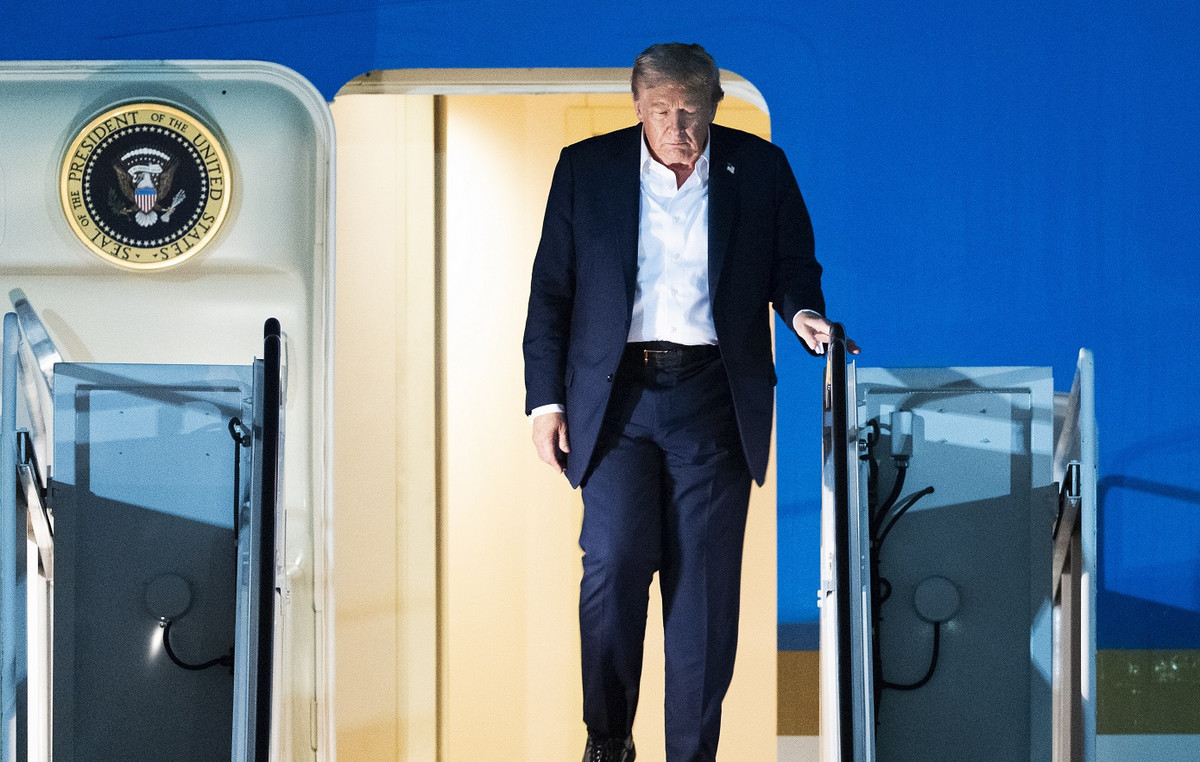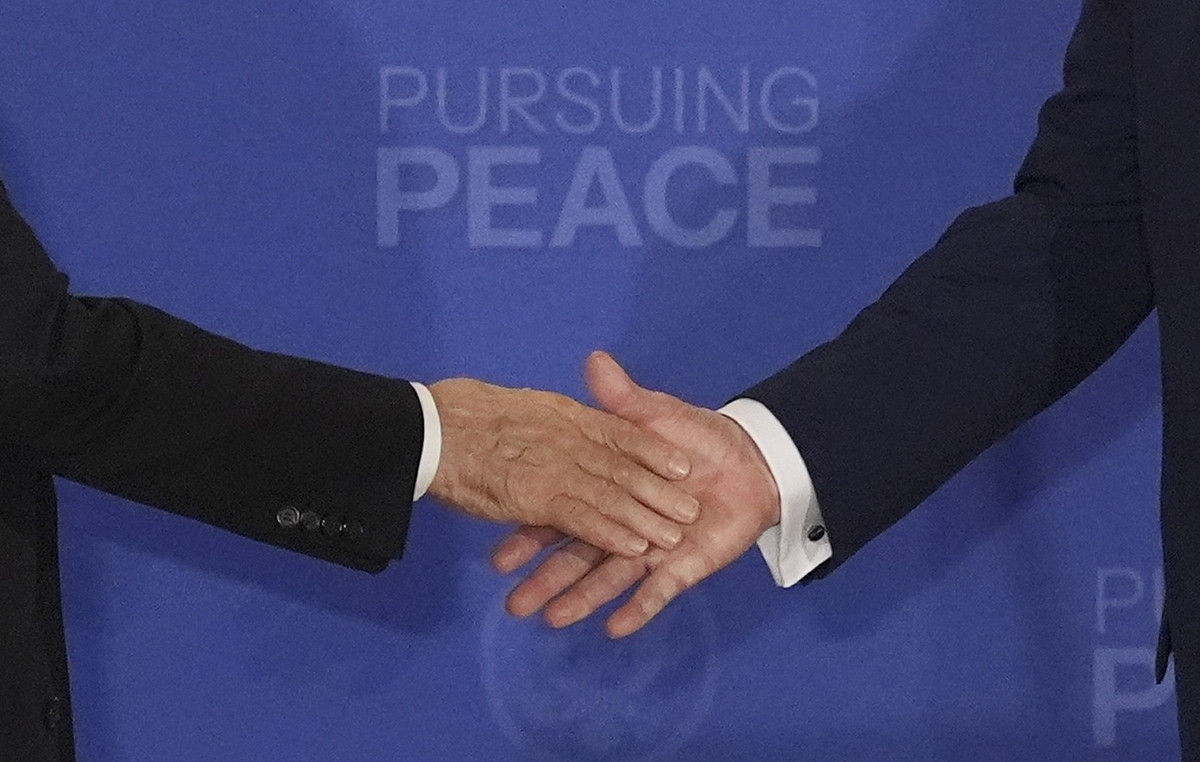O Ibovespa closed with losses of 2.04%, at 111,496.21 points, this Friday (19), with almost all the stocks that make up the index falling, following a negative day abroad with pessimism among investors. The index was also pressured by the fall in the price of commodities such as oil and iron ore.
That was the biggest drop since July 11, when it fell 2.07%. At the time, the Ibovespa was pulled down mainly by the fall in shares linked to commodities which reflected a devaluation in oil and iron ore prices amid fears of a stronger economic slowdown in China and a consequent drop in demand.
already the dollar ended up hovering around stability, with a slight drop of 0.06%, quoted at R$ 5.168, with investors resuming an aversion to risks amid concerns about a scenario of recession global.
The exchange rate remains “congested” between its 50, 100 and 200-day moving averages, lines that, broken in a sustainable way, could indicate the beginning of a trend for prices.
The real was not among the worst-performing currencies of the week, with its Chilean, Colombian and South African rand pairs topping the list of losses in the emerging currency spectrum.
On Thursday (18), the dollar rose 0.06%, to R$ 5.171. The Ibovespa rose 0.09% to 113,812.87 points .
In the week
For the week, the dollar rose 1.86%. The rise narrowly did not evaporate the accumulated losses for the month (now at 0.08%) and reduced the fall in the year to 7.27%.
The real was not among the worst-performing currencies of the week, with its Chilean, Colombian and South African rand pairs topping the list of losses in the emerging currency spectrum.
But, in a bad omen for the Brazilian currency and others of commodity-exporting countries, attention was drawn to the decline of the Chinese yuan, which at offshore rates suffered the biggest weekly devaluation since April (about 1.4%) and touched the lowest since September 2020 at $6,844.
China continues to face setbacks in supply chains from the Covid-19 pandemic, and its growth prospects have taken a new hit in recent days as a heat wave in the country forced the shutdown of factories and worsened the scenario of drought in reservoirs, with reports of restrictions on electricity consumption.
It is in this context in which the world’s second largest economy is skating and the US continues to face high inflation that Bank of America strategists do not see any short-term refreshment.
“With inflation several times above target in most cases, we believe it is too early to expect a ‘dovish’ pivot. We see interest rate risks higher, longer, than market prices. The PBOC (Chinese central bank) signals its desire to depreciate the yuan with strings attached, and the South African rand, real, Mexican peso and Polish zloty show the greatest sensitivity to the yuan’s movements,” the professionals said in a note.
Next week, investors will be watching the minutes of the European Central Bank’s (ECB) July meeting, as well as comments from Fed Chair Jerome Powell, when he addresses the annual global conference of central banks in Jackson Hole, Wyoming, on 26 of August.
possible recession
The fear in the market throughout the trading session was that interest rate hikes to combat record levels of inflation would lead to a scenario of strong deceleration or even recession in large economies, especially United States .
On Thursday (18), leaders of the Federal Reserve signaled a toughest position in the fight against inflationary pressures, helping bets on higher interest rate hikes, of 0.75 percentage point in September, beneficial for the dollar.
At the same time, the economy of China is also concerned with signs of deceleration that tend to have repercussions worldwide, especially affecting large commodity exporters, such as Brazil.
Iron ore
futures contracts in ore in iron in the bags in Dalian and Singapore fell this Friday and incomes to have its biggest weekly low insin mid in July, indue to increased concern about the insend by the ingredient ifinin China as the country’s economy falters.
The contract in ore in iron most traded for January on the Dalian Commodity Exchange ended trading with a fall in 2% at 673.50 yuan ($98.93) a ton, inthen in reach its lowest level insin 27 in July, to 672 yuan.
In the purse in Singapore, the contract in The most active October fell 0.3% to $101.40 a ton.
A wave in heat in China, the world’s largest producer in steel, brought rationing in electricianinforcing some mills to stop operations.
This has raised concern about the insends in ore in iron. Analysts warned that the inmanda will likely remain weak in China because of mandatory limits in production in steel, inAcceleration of the real estate sector and Covid-19 restrictions.
Petroleum
Oil futures closed higher on Friday, in a session marked by volatility. Crude oil was pressured for much of the day as the dollar strengthened against rivals, amid a heightened search for safety ahead of the Jackson Hole symposium.
WTI oil for October, the most liquid contract, closed up 0.37% (US$ 0.33), at US$ 90.44 a barrel, on the New York Mercantile Exchange (Nymex). However, for the week, there was a drop of 1.79%. Brent, on the Intercontinental Exchange (ICE), for the same month rose 0.13% (US$ 0.13), to US$ 96.72 a barrel, with a weekly drop of 1.46%.
Oil fell for much of the session as the dollar appreciated more strongly, reducing the commodity’s attractiveness. Investors are still digesting the sharp declines in US oil and gasoline inventories. The data shows “robust demand,” said Manish Raj, chief financial officer at Velandera Energy Partners. “Next week’s report will be watched closely to see if this week’s solid demand was just an anomaly or the new norm. Meanwhile, the Iran nuclear deal appears to be “stuck in a vacuum, crushing hopes for additional supplies,” Raj adds.
Oanda economist Craig Erlam points out, however, that Iran’s nuclear talks have not yet collapsed, which remains a potential downside for oil prices. Brent hovering above $92 and WTI unstable around $90.”
For Capital Economics, there may be news about negotiations between Iran and the West on a revised nuclear deal next week. “If an agreement were reached, Iran’s production and exports would likely increase rapidly and we would revise our oil price forecast accordingly,” he predicts in a report sent to clients.
overall feeling
Strong global risk aversion by investors, triggered by fears about a possible widespread economic slowdown due to a series of interest rate hikes around the world to contain record levels of inflation, has eased in recent days, reflecting expectations of a cycle of interest rate hikes. less aggressive in the United States.
The process of raising the US rate continued in July with a new increase of 0.75 percentage point. However, the Federal Reserve has signaled that it may make smaller hikes as the country’s economy already shows signs of slowing, seeking to avoid a recession.
Higher interest rates in the United States attract investments for the country’s fixed income due to its high security and favor the dollar, but harm markets and stock exchanges around the world, including the North American ones.
Investors are also monitoring the situation of China’s economy, which is also showing signs of a slowdown linked to a series of lockdowns in relevant cities. The expectation is that the Chinese government will intensify an effort to stimulate the economy, but with difficulties to reverse a situation of low consumption by the population, which impacts the country’s demand for commodities.
In the domestic scenario, the Benefits PEC which creates or expands social benefits with an estimated cost of R$ 41 billion, was poorly received by the market, as it reinforces the fiscal risk by bringing new spending above the ceiling.
The Ibovespa and the real were harmed by the scenario, but an apparent greater optimism in the market has allowed a recovery.
Up and down from B3
Here are the main highlights of the trading session this Friday:
biggest highs
- Minerva (BEEF3) +2.25%;
- IRB Brazil (IRBR3) +1.85%;
- Hypera (HYPE3) +1.70%;
- Vibra (VBBR3) +1.69%;
- Cogna (COGN3) +0.39%
biggest casualties
- Locaweb (LWSA3) -7.72%;
- Blue (BLUE4) -7.63%;
- Goal (GOLL4) -7.30%;
- MRV (MRVE3) -7.28%;
- Magazine Luiza (MGLU3) -6.20%
Test your knowledge about the Ibovespa
Let’s start with an easy one: what is the Ibovespa?
Who is responsible for calculating the Ibovespa?
What types of assets are eligible to be listed on the Ibovespa?
Which of these is NOT a criterion for a stock to enter the Ibovespa
How many shares are currently in the Ibovespa theoretical portfolio?
How often is the Ibovespa theoretical portfolio reviewed?
What is the most important stock on the Ibovespa?
What is the smallest share on the Ibovespa?
Each Ibovespa point is equivalent to 1 real. This statement is
What is the historical record for closing the Ibovespa?
Try again!
Tip: follow CNN Business to understand more about Ibovespa
Nice job!
You know a lot about the Ibovespa, but you could know a little more
Sensational!
Congratulations! Are you an Ibovespa expert?
*With information from Reuters, Agência Estado and Dow Jones Newswires
Source: CNN Brasil
I am Sophia william, author of World Stock Market. I have a degree in journalism from the University of Missouri and I have worked as a reporter for several news websites. I have a passion for writing and informing people about the latest news and events happening in the world. I strive to be accurate and unbiased in my reporting, and I hope to provide readers with valuable information that they can use to make informed decisions.

